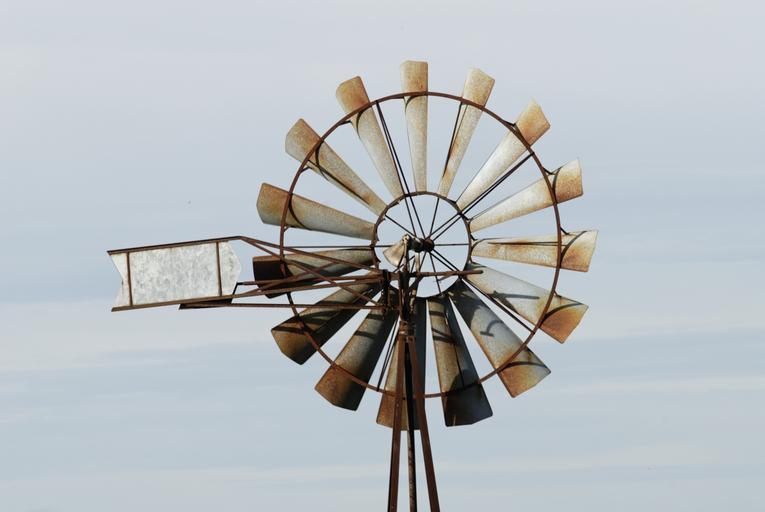

The wind is the air moving as a result of the sun’s unequal heating of the Earth. You cannot see it or touch it, and it lacks substantiality, but you can still sense its power. In the summer, it dries your clothing, and in the winter, it may be bone-chilling. It has the power to uproot enormous trees from the ground and drag sailing boats across the sea. It acts as the atmosphere’s great equalizer, moving heat, moisture, pollution, and dust over vast distances.
Fluctuations in the pressure of the atmosphere produce winds. The sun heats the land and sea more than it does the rest of the world near the equator. Higher in the atmosphere, warm equatorial air moves to the poles. This system has little pressure. Simultaneously, cold, dense air replaces the hot air and flows over the surface of the Earth in the direction of the Equator. This system operates under high pressure. Winds move from high to low-pressure regions. There is a line called the front that separates these two regions. Different sorts of wind and weather patterns happen due to the complicated interactions between fronts.
Prevailing air currents blow across a certain region from a single direction. Convergence zones are places where the main winds congregate. These winds often move east to west instead north to south. It occurs as a result of the Coriolis effect caused by the Earth’s rotation. In the north half of the globe, the Coriolis effect causes wind systems to rotate counterclockwise, while in the south, clockwise.
Some winds move along the borders of the high and low-pressure processes due to the Coriolis effect. These are geostrophic winds that act by the following rule:
Here are the five wind zones, including the westerlies, polar easterlies, trade wins, horse latitudes, and the doldrums:
The westerlies sometimes referred to as westerly winds, are present in two locations on Earth. They are between 30 and 60 degrees latitude in the Northern Hemisphere and between 30 and 60 degrees latitude in the Southern Hemisphere. The westerlies move west to east whereas other winds go east to west, giving these unusual winds their unusual names. In essence, as it warms, the air near the equator rises. The colder air at higher elevations goes to the aforementioned latitudes by this upward motion. In this upper latitudinal area, this circulating air also causes the air at lower altitudes to move. On the surface of the water, the speed difference between these two types of air may be sensed. On the earth’s surface, you can feel the difference in speed between these two types of air.
Ocean currents are greatly influenced by westerlies, particularly in the south of the globe. The strong antarctic circumpolar current, propelled by westerlies, flows across the continent from the west region to the east at around 4 km per hour. This current is the world’s greatest ocean current. It is in charge of bringing to the ocean vast quantities of cold water that is rich in nutrients. This water supports thriving marine ecosystems and food webs.
Dry, chilly polar easterlies are the dominant winds from the east. They come from pressure ridges located around the South and North Poles. Low-pressure zones from sub-polar areas get polar easterlies.
The powerful winds that move from the east over the tropics are trade winds. Typically, these winds are extremely predictable. They played a significant role in trade history, communication, and exploration. Trade winds allowed ships to quickly and reliably navigate the huge Atlantic and, subsequently, Pacific Oceans. They create sea currents that are still important for shipping today.
Between the westerlies and the trade winds, there is a small region of warm, dry weather known as the horse latitudes. The latitudes of horses are roughly between 30 and 35 degrees north and south. The horse latitudes include several deserts, from the arid Kalahari of Africa to the dry Atacama of South America. At the horse latitudes, there are a variety of winds that are often weak. Even powerful winds frequently last only a few minutes.
The intertropical convergence zone(ITCZ) is the location where the trade winds from the two hemispheres converge. Doldrums surrounds the ITCZ. The weather is abnormally quiet, and there are faint breezes in the doldrums. The sun warms the equatorial region causing large air volume to grow and move south and north, resulting in the low-pressure doldrums. Around the horse latitudes, this warm, low-pressure equatorial wind descends once more. Some air masses circle in the opposite direction as westerlies, while others go back as trade wins to the doldrums.
Additional Resources:
American families are once again juggling the seasonal custom—and financial burden—of back-to-school shopping as the…
Want to bond over unexpected activities? Look at these unconventional ways to connect with your…
Burnout isn’t just something that happens to CEOs. For moms homeschooling littles, it’s a very…
When it comes to long-distance motorcycling, comfort, reliability, and smart engineering can make or break…
Flowers have seen significant transformation over time; online flower shopping is increasingly common now for…
Learn essential first-time landlord tips for success, from tenant screening to property maintenance. These strategies…